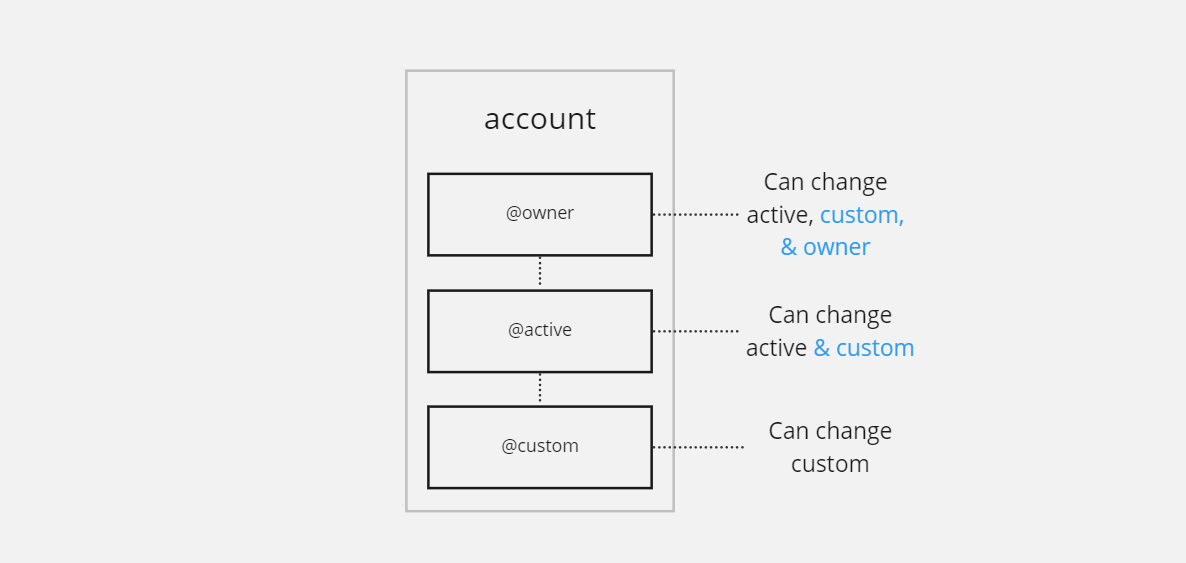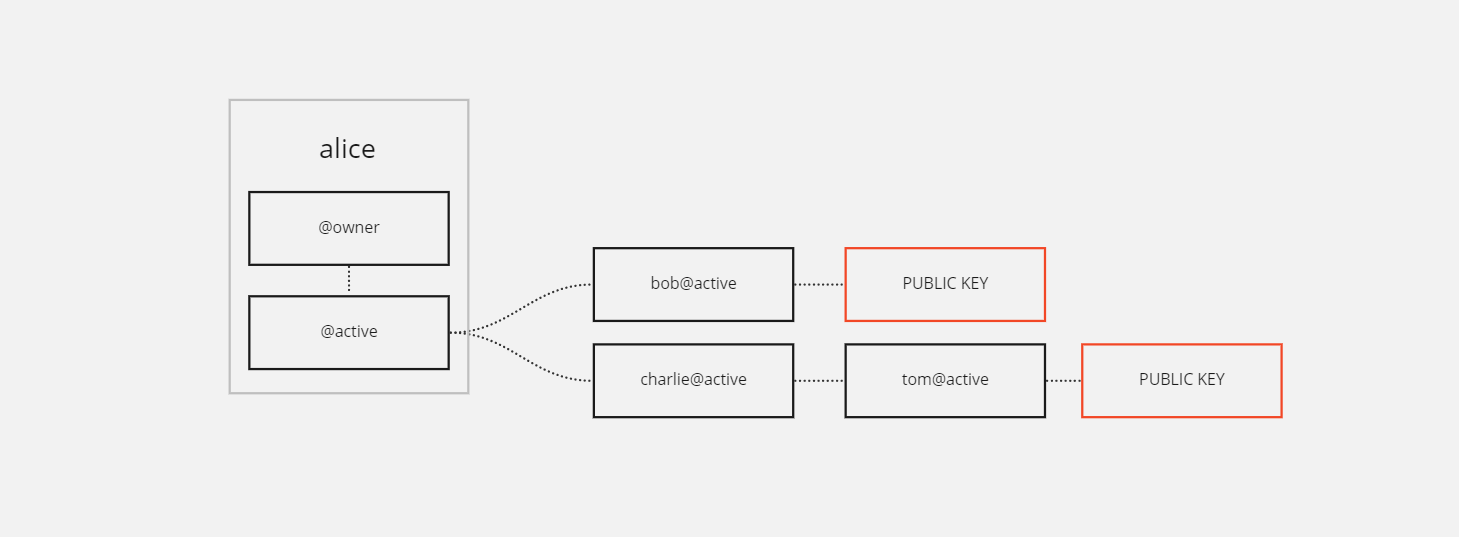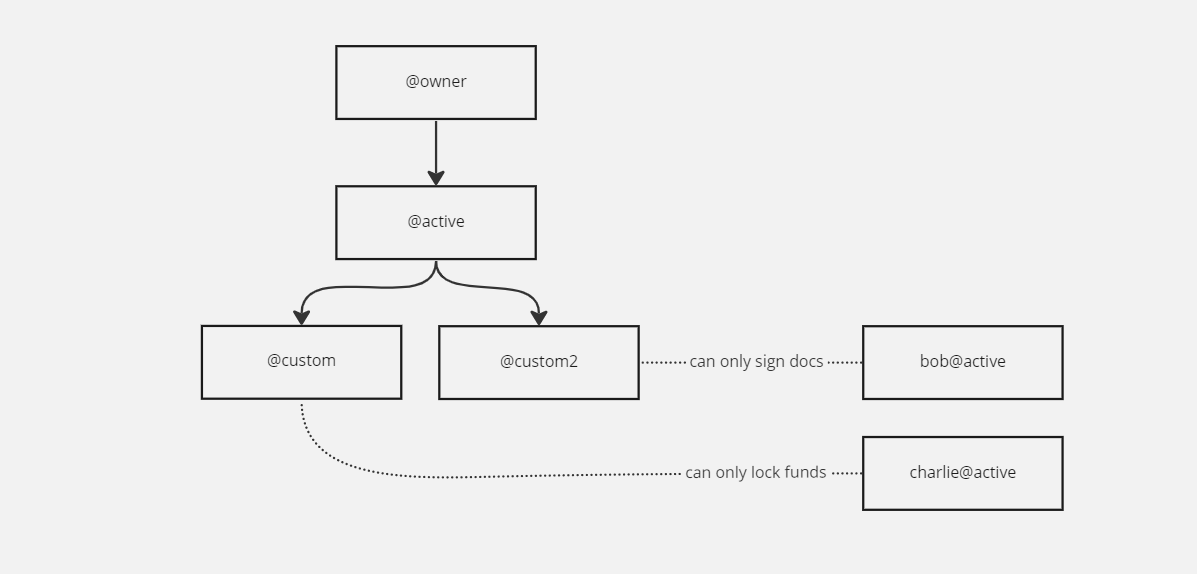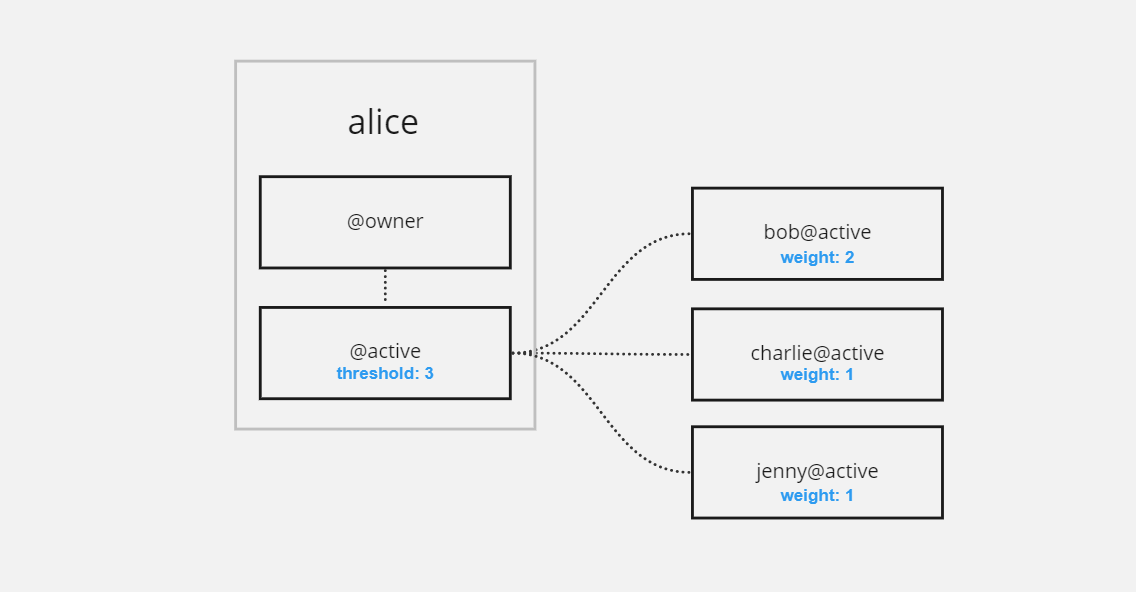Accounts
A Vaulta account is a digital container for holding Vaulta tokens, resources, permissions, and more.
Smart Contracts are also deployed on top of accounts, and the account owner can control the smart contract unless control is relinquished.
Account names
Vaulta accounts have human-readable names.
However, in order to keep account names efficient on the blockchain, a few restrictions apply:
- All characters must be lowercase
- Every name must be 12 characters long (or less with a suffix/premium name)
- Only letters
a-z, numbers1-5, and period (.) are supported characters. - Names cannot start with a number or a period.
- Names cannot end with a period.
Periods have a special meaning for Vaulta accounts. They specify that an account has a suffix (similar to a top-level domain like .com), also known as a premium name. Accounts with a suffix can only be created by the suffix owner.
For instance, if someone owns the suffix .bar then only that person can create foo.bar.
Regex Validation
The following regex can be used to validate a Vaulta account name:
(^[a-z1-5.]{1,11}[a-z1-5]$)|(^[a-z1-5.]{12}[a-j1-5]$)
Public/private keys
Every Vaulta account is ultimately controlled by a key pair (public and corresponding private key). While the public key is used to identify the account on the blockchain and can be publicly known, the private key which is used to sign each transaction must be kept secret at all times.
If you lose your private key, you will lose access to your account and all of its assets, smart contracts, and any other data associated with it.
Examples of private and public keys:
| Type | Key |
|---|---|
| Private Key | 5KSdyAiFzYQAtBKDBKCCF28KMMhZ4EmXUxSg8B3nSkHKutT15rY |
| Public Key | PUB_K1_5d7eRKgCCiEdsbBdxxnZdFWnGYS64uWZPZgTcTU1xnB2aESxqR |
| Legacy Public Key | EOS5d7eRKgCCiEdsbBdxxnZdFWnGYS64uWZPZgTcTU1xnB2cq4JMD |
Permissions system
Vaulta offers extra security mechanisms for accounts out of the box, using what we call the permissions system.
Each account has a set of hierarchical permissions that control what that account can do, and comes with two base permissions by default. These two permissions cannot be removed as they are required for your account to function properly.
The mandatory permissions are owner and active.
A permission can only ever change what controls it (keys or accounts) or what controls its children. It can never change what controls its parent.

What controls a permission is either a public key or another account. This allows for the creation of complex account control structures, where multiple parties may control a single account while still having full autonomy over their own account's security.
Take the following diagram as an example, where the account alice is controlled by both bob and charlie,
while charlie is also controlled by tom.
But remember, all accounts are eventually controlled by keys.

You can add custom permissions underneath the active permission which allows you to limit that permission's access to
only a specific contract's action (callable function). That permission will then only ever be able to interact with the
contract action you specified.
This means you are able to create granular access permissions across accounts and have hierarchical ownership and usage of them.

Most importantly, the permission system has built-in support for multi-signature transactions (transactions that require multiple parties to sign them). Every linked account or key associated with a permission has a weight assigned to it, and the permission itself has a threshold.
As you can see in the example below, bob alone does not have enough power to sign using the active permission.
He needs either charlie or jenny to co-sign with him for any transaction that alice@active makes. On the other
hand, charlie and jenny cannot sign a transaction alone, they need bob.

Smart contracts
Smart Contracts allow you to add functionality to an account. They can be anything from simple things like a todo application to a fully-fledged RPG game running entirely on the blockchain.
Every account has the ability to have one single smart contract deployed to it, however, that smart contract can be updated and replaced at will.
Creating accounts costs Vaulta
Because RAM is a limited resource, creating an account requires you to spend Vaulta to buy the RAM needed to store the account's data. This means that in order to create an account, someone else who already has an account must create it for you.
Most Vaulta wallets will allow you to create an account for yourself, but will require you to pay for the RAM needed to store your account. Some wallets will pay for the RAM for you, but will require you to pay them back at a later date.
💰 Current costs
The cost of opening an account is based on the RAM required for opening it, which as of writing this document (20/02/2023) is
2996 bytes.
Relinquishing ownership of an account
Upgrade-ability has significant benefits for smart contract development, but isn't always wanted. At some point, the community you are building for might request that you relinquish control of the smart contract, and make it immutable, or semi-immutable.
You have a few options to achieve that goal.
💀 Don't forget the code permission!
If you relinquish the account's ownership, do not forget to keep the
eosio.codepermission on the account'sactivepermission. Otherwise, the account will be unable to execute any inline actions on the blockchain, which might kill your contract.
NULL account
You may set the contract account's owner and active permissions to eosio.null@active. This is a NULL account that is specifically designed for these purposes. It has no private key or owner.
This is a good option if you want to burn control of this account forever.
Producer controlled
Alternatively, you may set the contract account's owner and active permissions to three different types of producer-controlled (network consensus-controlled) accounts, so that if there is ever an issue with this contract you can request the help of the producers to upgrade the contract.
This is a good option if you are dealing with intricate and complex contracts that might have bugs that could impact the users negatively.
eosio.prods
The eosio.prods account is controlled by ⅔+1 of the actively producing producers on the network. This means that if there are 21 active producers then you would need 15 of them to sign off on all upgrades.
prod.major
The prod.major account is controlled by ½+1, meaning that if there are 30 active producers then you would need 16 of them to sign off on all upgrades.
prod.minor
The prod.minor account is controlled by ⅓+1, meaning that if there are 30 active producers, then you would need 11 of them to sign off on all upgrades.